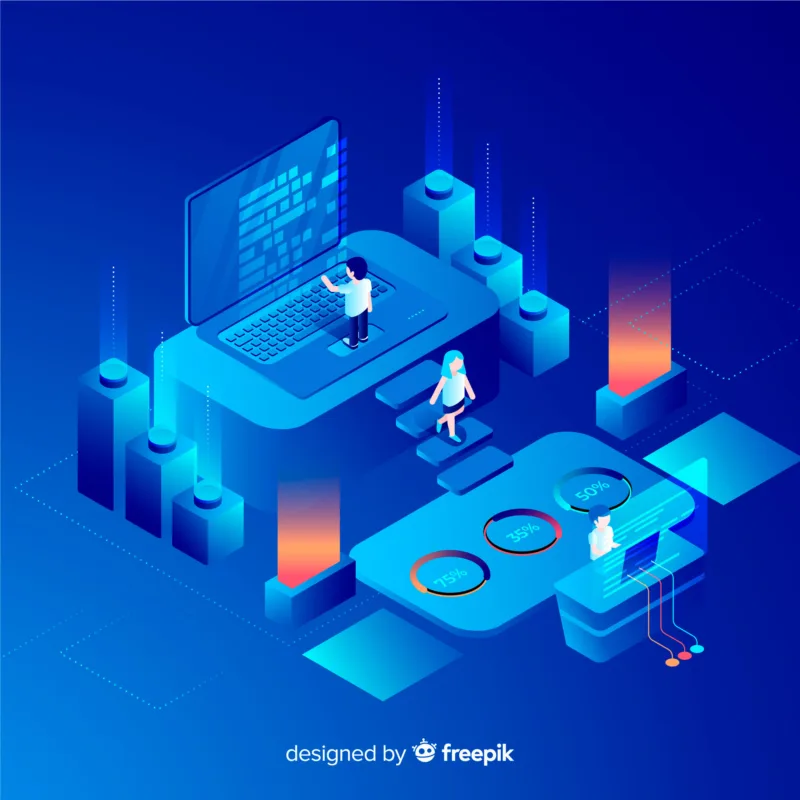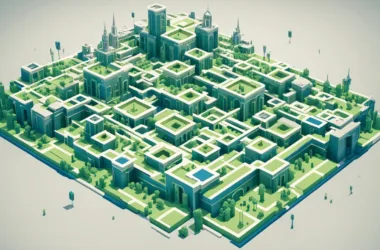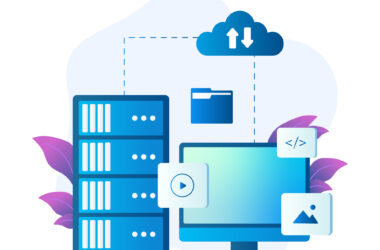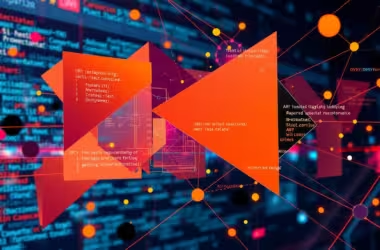The future of software architecture stands at the forefront of innovation and transformation. As we navigate an increasingly digital world, how we design, develop, and deploy software is evolving at an unprecedented pace.
New paradigms are reshaping the fabric of software architecture, from integrating AI and machine learning to adopting Containerization and serverless computing.
In this article, we will discuss the key trends and future of software architectures in detail.
The Future Of Software Architecture

AI And Machine Learning Integration
AI and machine learning integration revolutionize software by enabling applications to adapt and learn from data, enhancing efficiency and innovation. These intelligent algorithms drive decision-making processes, optimizing performance and user experiences.
Through predictive analytics and pattern recognition, AI-powered systems anticipate user needs, delivering personalized and contextually relevant services. The integration of AI extends beyond traditional software, permeating industries such as healthcare, finance, and manufacturing.
As AI continues to evolve, the boundaries of what’s possible in software architecture expand, unlocking new opportunities for automation and optimization.
Containerization And Kubernetes
Containerization revolutionizes software deployment by encapsulating applications and their dependencies into portable, isolated units. Containers provide consistency across different environments, streamlining development, testing, and deployment processes.
Kubernetes, an open-source container orchestration platform, automates container management, scaling, and deployment. With Kubernetes, developers can build resilient, self-healing systems that adapt to changing workloads and infrastructure conditions.
Containerization fosters a microservices architecture, promoting modularity, scalability, and fault isolation. Containers facilitate efficient resource utilization and reduce overhead by decoupling applications from the underlying infrastructure.
As container adoption continues to rise, it reshapes the landscape of software architecture, driving agility and innovation across industries.
DevOps And Continuous Delivery
DevOps practices bridge the gap between development and operations, fostering collaboration and automation throughout the software development lifecycle. Continuous delivery enables rapid and reliable software releases through automated testing, deployment, and monitoring.
DevOps accelerates time-to-market and enhances product quality by automating repetitive tasks and eliminating manual interventions. DevOps culture emphasizes iterative development, feedback loops, and continuous improvement, driving organizational agility and resilience. Through Infrastructure as code (IaC) and configuration management tools, DevOps enables consistent and reproducible environments across development, testing, and production.
Adopting DevOps principles requires cultural and organizational shifts, promoting transparency, accountability, and shared responsibility. Continuous integration and continuous delivery (CI/CD) pipelines automate build, test, and deployment workflows, ensuring software releases are predictable and error-free.
Edge Computing
Edge computing brings computation and data storage closer to the source of data generation, reducing latency and enabling real-time processing. By processing data locally, edge computing minimizes bandwidth usage and improves application responsiveness.
Edge devices like IoT sensors and gateways collect and process data at the network’s edge, enhancing scalability and efficiency. Edge computing is crucial for applications requiring low latency and high bandwidth, such as autonomous vehicles and augmented reality. With edge computing, organizations can leverage distributed computing resources to deliver immersive and interactive experiences.
Edge architectures combine local processing with cloud-based services, providing a hybrid approach for diverse application requirements. As the proliferation of connected devices accelerates, edge computing becomes increasingly integral to the fabric of modern software architecture, driving innovation and enabling new use cases.
Ethical Considerations
Ethical considerations in software architecture are paramount, ensuring systems are designed and deployed responsibly and respecting privacy, fairness, and human rights. As technology becomes more pervasive, ethical frameworks guide decision-making processes to mitigate potential harms and biases.
Transparency and accountability are essential, promoting trust and confidence in software systems and their outcomes. Ethical considerations extend to data governance, ensuring the responsible collection, use, and sharing of personal information.
Fairness and inclusivity are critical in addressing algorithm biases and promoting diversity in software development teams. As stewards of technology, architects must prioritize ethical considerations in every aspect of software design and implementation.
Event-Driven And Reactive Architectures
Event-driven and reactive architectures enable the development of highly responsive and scalable systems that react to real-time changes. Events trigger actions, allowing applications to adapt dynamically to evolving conditions and user interactions.
Reactive architectures embrace responsiveness, resilience, and elasticity principles, ensuring systems can gracefully handle fluctuating workloads and failures. Event-driven design promotes loose coupling and composability, enabling modular and flexible architectures. Reactive systems prioritize responsiveness, delivering seamless user experiences across devices and platforms.
Event-driven and reactive architectures empower organizations to build agile, scalable, and robust systems, meeting the demands of today’s dynamic business environment.
Hybrid And Multi-Cloud Architectures
Hybrid and multi-cloud architectures combine on-premises infrastructure with cloud services from multiple providers, offering flexibility, scalability, and resilience. Organizations leverage hybrid cloud solutions to optimize resource utilization, mitigate risks, and meet regulatory requirements.
Multi-cloud architectures distribute workloads across multiple cloud providers, reducing vendor lock-in and enhancing availability. Hybrid and multi-cloud strategies enable seamless workload migration and disaster recovery, ensuring business continuity in the face of disruptions. Organizations can tailor their infrastructure to meet specific application requirements and cost considerations by leveraging a mix of public and private cloud resources.
Hybrid cloud deployments bridge legacy systems and cloud-native applications, facilitating digital transformation initiatives. Multi-cloud architectures offer redundancy and fault tolerance, minimizing the impact of service outages and infrastructure failures.
Low-Code And No-Code Development
Low-code and no-code development platforms empower citizen developers to create applications with minimal coding knowledge, accelerating time-to-market and democratizing software development. These platforms offer visual interfaces and drag-and-drop functionality, enabling users to design and deploy applications without writing traditional code.
Low-code and no-code tools streamline development processes, reducing reliance on skilled developers and increasing productivity. By abstracting away complexity, these platforms enable business users to take an active role in application development, driving innovation and agility.
Low-code and no-code solutions promote collaboration between business and IT stakeholders, fostering alignment and accelerating digital transformation initiatives. These platforms offer pre-built templates and integrations, enabling rapid prototyping and iteration of applications.
Organizations can leverage these platforms to address skill shortages and scale application development efforts as low-code and no-code development gains momentum.
Microservices Architecture
Microservices architecture decomposes monolithic applications into modular, independently deployable services, promoting agility, scalability, and fault isolation. Each service is responsible for a specific business function and communicates with other services through APIs.
Microservices enable teams to work independently, fostering faster release cycles and improved maintainability. By breaking down applications into smaller components, organizations can scale individual services independently, optimizing resource utilization and enhancing performance. Microservices architecture aligns well with DevOps principles, facilitating continuous integration and delivery.
Despite its benefits, microservices introduce complexities such as service discovery, distributed tracing, and data consistency, requiring robust monitoring and management solutions.
Security-First Architectures
Security-first architectures prioritize robust security measures at every layer of the software stack, safeguarding against cyber threats and protecting sensitive data. These architectures employ defence-in-depth strategies, incorporating multiple layers of security controls to mitigate risks.
From secure coding practices to encryption and access controls, security is embedded into the design and implementation of software systems. Threat modeling and risk assessments identify potential vulnerabilities, enabling proactive security measures to be implemented early in the development lifecycle. Security-first architectures emphasize the importance of continuous monitoring and threat intelligence, allowing organizations to detect and respond to security incidents promptly.
Compliance with regulatory requirements and industry standards is integral to security-first architectures, ensuring adherence to best practices and legal obligations.
Serverless Computing
Serverless computing abstracts away the underlying infrastructure, allowing developers to focus solely on writing code without managing servers or provisioning resources. Functions as a Service (FaaS) platforms, such as AWS Lambda and Azure Functions, execute code in response to events, scaling automatically based on demand.
Serverless computing offers cost efficiency and scalability, as organizations only pay for the resources consumed during execution. This pay-per-execution model eliminates idle resources and reduces operational overhead, enabling rapid development and deployment of applications.
While serverless computing excels in event-driven and ephemeral workloads, it may not be suitable for long-running or resource-intensive tasks.
FAQs: Future of Software Architecture
What Is The Future Of Architecture?
The future of architecture is deeply intertwined with technological advancements and evolving societal needs. Concepts such as green architecture, which focuses on eco-friendly design and construction practices, and smart cities, which leverage data and technology to enhance urban living, are expected to shape the architectural landscape.
Is Software Architecture In Demand?
Yes, software architecture is in high demand in today’s technology-driven world. As businesses across industries undergo digital transformation, the need for skilled software architects who can design scalable, secure, and efficient software systems has never been greater.
Is It Worth Becoming A Software Architect?
Becoming a software architect can be highly rewarding for individuals passionate about technology, problem-solving, and innovation. Software architects are responsible for designing the overall structure of software systems and making critical decisions that impact applications’ performance, scalability, and security.
What Is The Software Architecture In 2024?
Several key trends and developments will characterize 2024 software architecture. Integrating artificial intelligence and machine learning, containerization and microservices architecture, and security-first architectures will become standard practice.
Final Thoughts
In conclusion, the future of software architecture is defined by innovation, adaptability, and a relentless pursuit of excellence. As we navigate the complexities of a rapidly changing digital landscape, embracing emerging technologies and architectural paradigms is essential to stay ahead.
By prioritizing security, sustainability, and resilience, organizations can build robust software systems that meet today’s demands and lay the foundation for a brighter tomorrow. As we embrace the future of software architecture, let us continue to push boundaries, challenge conventions, and pave the way for transformative advancements in technology.






